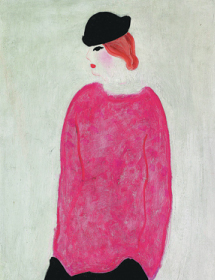Honoring China's art pioneers
 0 Comment(s)
0 Comment(s) Print
Print E-mail China Daily, January 29, 2019
E-mail China Daily, January 29, 2019

Wu Guanzhong's Beijing in Snow, Chang Shuhong's Bombing of Chongqing and Chang Yu's Woman in Red are shown at the Pioneering exhibition in Beijing. [Photo provided to China Daily]
"Their work demonstrates how they viewed and dealt with the cultural clashes between China and the West," he says. "They tried hard to master Western fine arts, such as oil painting, watercolor and sculpture; meanwhile, they injected an understanding of Chinese culture into their creations, by which they hoped to reach the ultimate goal-to give Chinese art a modern revival."
Xu translated the classic European art tradition into his ambitious production of several oil works that narrate ancient Chinese anecdotes, through which he attempted to lift the nation.
Pang, who hailed from a well-connected family, gave up the prospect of being a doctor-a family expectation. He took up painting and designing, instead. He compiled patterns on Chinese antiques, such as bronze ware and daily objects of ethnic groups, published them and used them in his designs.
Chang Shuhong's paintings won him several medals at the prestigious Paris Salon. After returning to China in the 1930s, he devoted the rest of his life to the research and preservation of the art of Dunhuang.
Chang's daughter, Chang Shana, 88, says her father's interest in Dunhuang was ignited after he visited an old book stall near the Seine and found a book by French Sinologist, Paul Pelliot, on Dunhuang. "He said: 'How much I admire European art, but how little I know about our own culture. What a shame!'"






Go to Forum >>0 Comment(s)